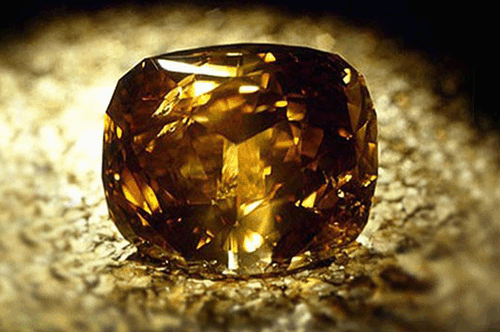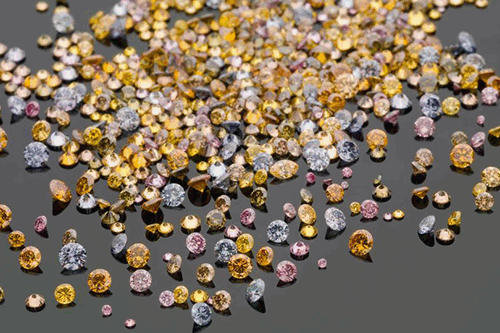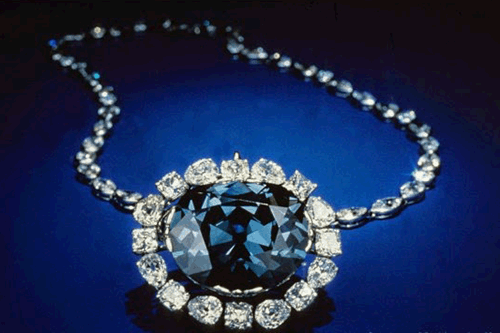At a flea market, as a part of an estate jewelry collection, a red stone mounted on a hatpin was purchased by Sidney De Young, a Boston jewelry merchant. The diamond was mistakenly described as a red garnet.
Sometime after purchasing the diamond, Mr. De Young decided to take a closer look at the stone and noticed that it did not have the appearance of a garnet because for an old stone it was very clean and scratch-free. At a testing laboratory, it was determined that the stone was actually a red diamond. The diamond, named after De Young is 5.03 carats in weight and is considered to be a round brilliant-cut diamond. It is acknowledged to be the third largest red diamond in the world after the Moussaieff Red and Kazanjian Red diamonds.

|
It boasts a clarity grade of VS-2 and is a Type IIa diamond with no chemical impurities except that it has a slight brown hue which made its true nature hard to determine until closer examination.
In accordance with DeYoung's wishes, after DeYoung died in 1986, the diamond was willed to the Smithsonian Institution's National Gem and Mineral Collection which is a part of the National Museum of Natural History.
The Smithsonian received the diamond in 1987 in the regular U.S. Mail delivery. Astonishingly, the carton was run-of-the-mill and the mailing was uninsured. At the museum, in the Hall of Gems, the diamond is now protected by bulletproof glass as it is the only red diamond in the world publicly displayed.

|
| Back to Famous Diamonds | |









